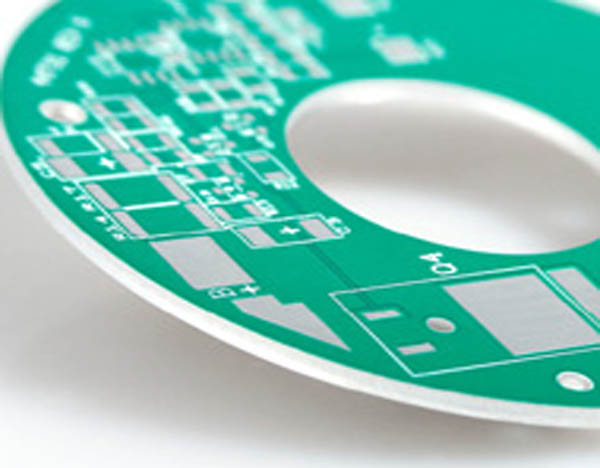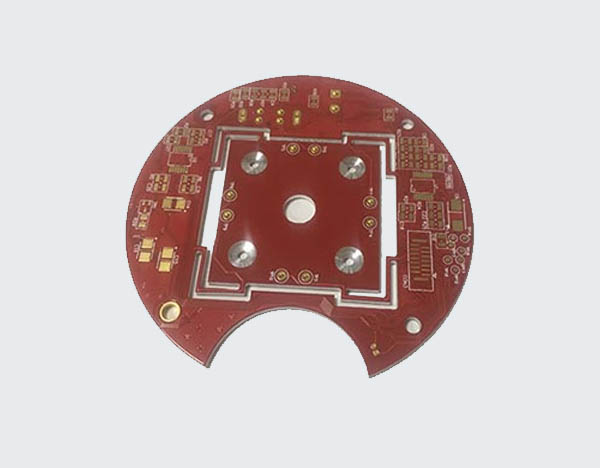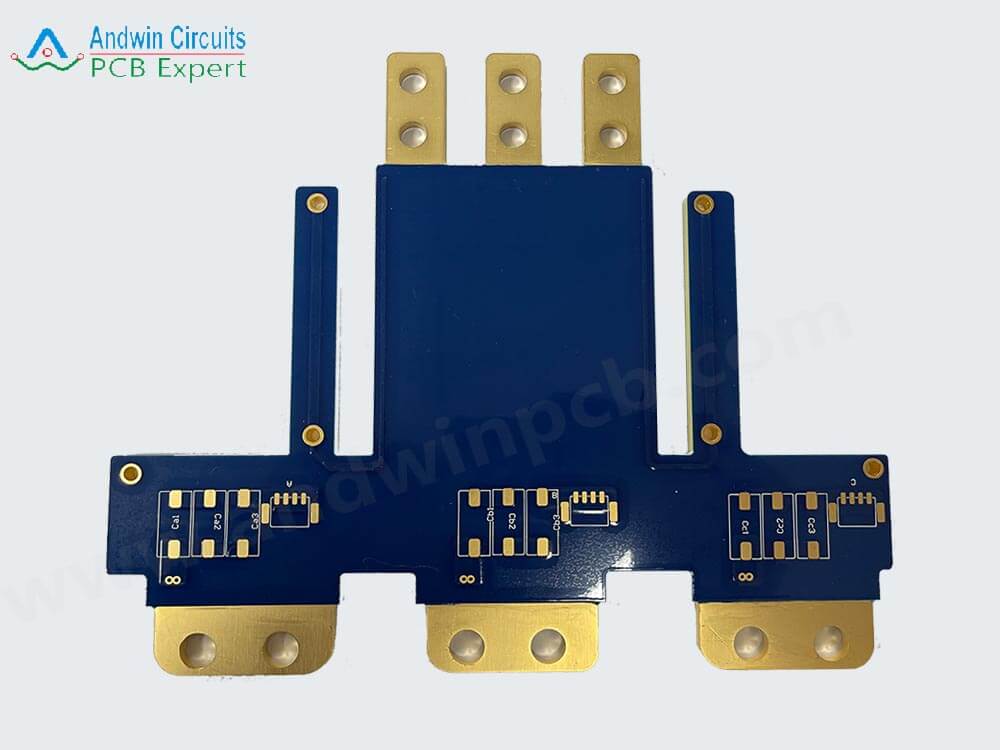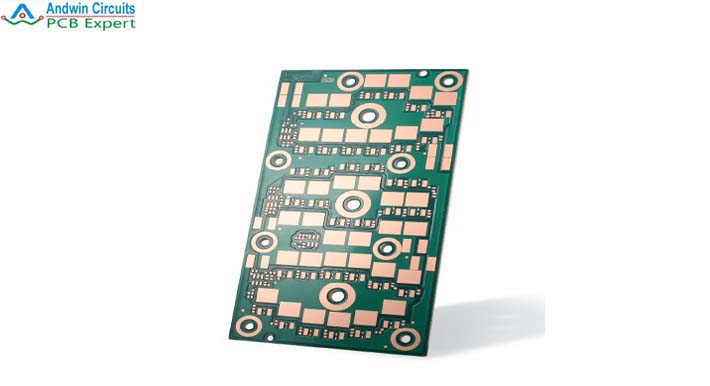2 layer metal core PCB
A 2 layer metal core PCB, also known as a metal core printed circuit board, is a type of PCB
that consists of two layers of copper traces on a metal core substrate.
The metal core is typically made of aluminum or copper,
which provides better thermal conductivity compared totraditional FR4 PCBs.
This makes 2 layer metal core PCBs ideal for applications that require efficient heat dissipation,
such as LED lighting, power electronics, and automotive electronics.

The construction of a 2 layer metal core PCB is similar to that of a standard PCB,
with the main difference being the use of a metal core substrate instead of a traditional FR4 substrate.
The metal core provides a solid foundation for the copper traces, allowing for better heat
dissipation and improved thermal management.
The copper traces are etched onto the metal core substrate using a similar process to that used for standard PCBs,
with the addition of a thermal conductive dielectric layer between the metal core and the copper traces to enhance heat
transfer.

One of the key advantages of 2 layer metal core PCBs is their superior thermal conductivity
compared to traditional FR4 PCBs.
The metal core substrate allows for more efficient heat dissipation,
which is crucial for high-power applications that generate a significant amount of heat.
This can help to improve the reliability and lifespan of electronic devices, as excessive
heat can lead to component failure and reduced performance.
In addition, the thermal conductive dielectric layer helps to further enhance heat transfer,
ensuring that the PCB remains cool even under high operating temperatures.

Another advantage of 2 layer metal core PCBs is their ability to support higher current
densities compared to traditional FR4 PCBs.
The metal core substrate provides a solid foundation for the copper traces, allowing for better power distribution and reduced voltage drop.
This makes 2 layer metal core PCBs ideal for high-power applications that require efficient power
delivery, such as power supplies, motor controllers, and inverters.
The improved thermal conductivity of the metal core also helps to reduce the risk of overheating, ensuring that the
PCB can handle high current loads without overheating.
In addition to their superior thermal conductivity and high current handling capabilities, 2
layer metal core PCBs also offer excellent mechanical stability and durability.
The metal core substrate provides a rigid base for the copper traces,
ensuring that the PCB remains stable and secure even in harsh operating environments.
This can help to prevent issues such as warping, bending, and cracking, which can occur with traditional FR4 PCBs.
The metal core substrate also provides better resistance to moisture, chemicals, and other environmental factors, ensuring
that the PCB remains reliable and long-lasting.
Overall, 2 layer metal core PCBs offer a number of advantages over traditional FR4 PCBs, making
them ideal for a wide range of high-power and high-temperature applications.
Their superior thermal conductivity, high current handling capabilities, and excellent mechanical stability
make them a popular choice for industries such as LED lighting, power electronics, automotive
electronics, and more.
With their ability to efficiently dissipate heat, deliver power, and withstand harsh environments,
2 layer metal core PCBs are a reliable and cost-effective solution for demanding electronic applications.
2-layer metal core PCBs application
2-layer metal core PCBs are commonly used in applications that require high power conduction and
heat dissipation, such as:
LED lighting:
LED fixtures require efficient heat dissipation to ensure long-term stable
operation, and 2-layer metal core PCBs can provide good thermal performance.
Power modules:
Power modules typically require high power conduction and heat dissipation, and
2-layer metal core PCBs can meet these requirements.
Automotive electronics:
Automotive electronic devices often require high temperature resistance
and high power conduction characteristics, and 2-layer metal core PCBs can provide stable
performance.
Communication equipment:
Communication equipment typically requires high power conduction and
heat dissipation, and 2-layer metal core PCBs can meet these requirements.
In general, 2-layer metal core PCBs are suitable for a variety of applications that require high
power conduction and heat dissipation.

2-layer metal core PCBs manufacturing process:
The production process of 2-layer metal core PCBs typically involves the following steps:
Substrate Preparation:
The metal core, usually made of aluminum or copper,
is prepared and cleaned to ensure proper adhesion of the circuit layers.
First time Drilling:
Holes are drilled into the meatal for insulation with the circuits.
Lamination:
A layer of insulating material, such as prepreg, is laminated onto the metal core to
insulate the circuit layers.
Second time Drilling:
Holes are drilled into the PCB for component mounting and interconnection.
Plating:
Copper is plated onto the drilled holes to provide electrical connections between the
circuit layers.
Image Transfer:
The circuit design is transferred onto a photosensitive film or mask, which is
then used to transfer the pattern onto the metal core substrate.
Etching:
The unwanted copper is etched away from the metal core, leaving behind the desired
circuit pattern.
Solder Mask
Application: A solder mask is applied to protect the circuitry and provide insulation.
Silkscreen Printing:
Component designators, logos, and other markings are printed onto the PCB.
Surface treatment:
Make the HASL , ENIG or other process that customer’s requirement.
Testing:
The PCB is tested for electrical continuity, insulation resistance, and other quality
parameters.
Final Inspection:
The finished PCB is inspected for any defects or imperfections before being
shipped to the customer.
Overall, the production process of 2-layer metal core PCBs involves a series of precise steps to
ensure the quality and reliability of the final product.
Other PCB products, you may interesting









